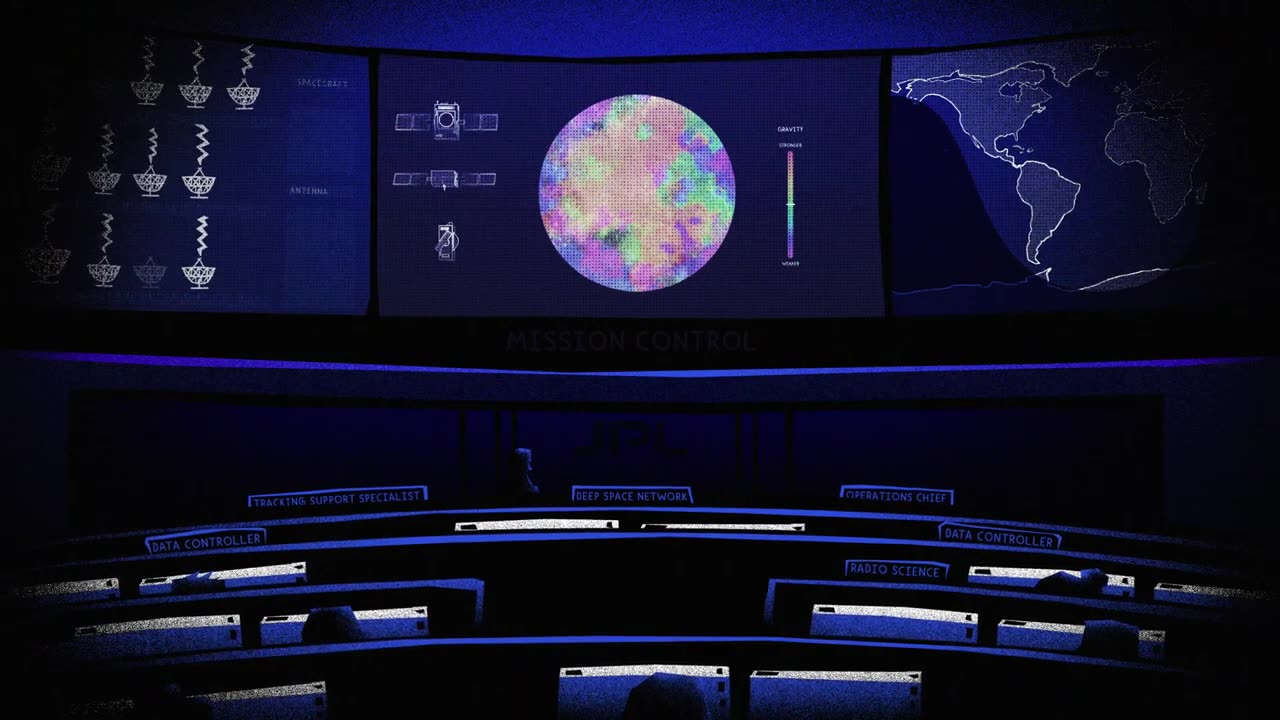Premium Only Content

How NASA Uses Gravity and Radio Waves to Study Planets and Moons
NASA employs a remarkable fusion of cutting-edge technology and scientific ingenuity to unravel the mysteries of planets and moons within our solar system. By harnessing the forces of gravity and the power of radio waves, they embark on captivating voyages of discovery.
At the heart of this scientific endeavor are spacecraft equipped with advanced instruments that exploit gravity as a cosmic tool. These spacecraft enter precise orbits around their target celestial bodies, where variations in gravitational forces provide invaluable insights into the bodies' composition, mass distribution, and even subsurface features. Through meticulous observations and calculations, scientists can decipher the intricate interplay between mass and gravitational forces, unveiling secrets hidden beneath planetary surfaces.
Complementing this gravitational dance, NASA's scientists utilize radio waves as cosmic messengers. State-of-the-art radar systems aboard spacecraft emit radio signals toward planets and moons, which bounce back after encountering different surface features and structures. By analyzing the returned signals, scientists construct intricate topographic maps, unravel surface roughness, and discern the presence of oceans, mountains, and valleys. These radio waves not only help reveal the intricate geological history of these celestial bodies but also aid in planning safe landing sites for future missions.
Intriguingly, the synergy of gravity and radio waves has unveiled astounding details about the far reaches of our solar system. For example, this dynamic duo has allowed us to peer through the thick shroud of Titan's atmosphere to study its methane lakes and icy terrain, and it has enabled us to decipher the complex geological history of Mars, with its ancient river valleys and dramatic canyons.
In essence, NASA's fusion of gravity and radio waves represents a masterful approach to unraveling the enigmas of distant planets and moons. As these technologies continue to evolve, our understanding of the cosmos expands, inspiring humanity to embark on awe-inspiring journeys of exploration and unlocking the secrets of the universe.
-
 13:37
13:37
Exploring With Nug
21 hours ago $8.39 earnedSUV Found Underwater Searching For Missing Man Jerry Wilkins!
84.5K4 -
 2:58:21
2:58:21
xBuRnTx
16 hours ago1st Warzone Stream Online
88.8K7 -
 6:10:21
6:10:21
JdaDelete
1 day ago $22.78 earnedDino Crisis - Sega Saturday
156K5 -
 23:22
23:22
MYLUNCHBREAK CHANNEL PAGE
1 day agoUnder The Necropolis - Pt 5
122K59 -
 2:26:11
2:26:11
Jewels Jones Live ®
2 days agoWINNING BIGLY | A Political Rendezvous - Ep. 108
173K50 -
 2:04:49
2:04:49
Bare Knuckle Fighting Championship
4 days agoBKFC FIGHT NIGHT MOHEGAN SUN FREE FIGHTS
94.1K7 -
 25:09
25:09
BlackDiamondGunsandGear
19 hours agoYou NEED to be Training For Whats to Come
65.2K12 -
 20:03
20:03
Sideserf Cake Studio
1 day ago $2.07 earnedA HUNGRY HUNGRY HIPPOS CAKE THAT ACTUALLY WORKS?
59.1K14 -
 23:51
23:51
marcushouse
1 day ago $2.16 earnedStarship’s Next Move Is Coming Sooner Than You Think!
44.6K7 -
 22:24
22:24
The Finance Hub
1 day ago $14.70 earnedBREAKING: JOE ROGAN JUST DROPPED A MASSIVE BOMBSHELL!!!
47.4K41